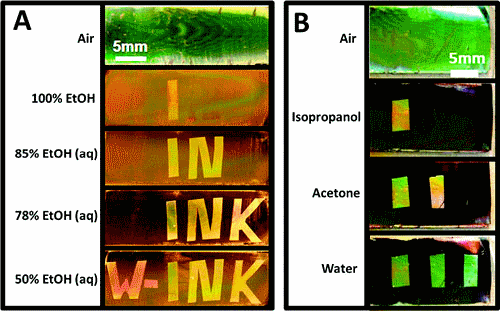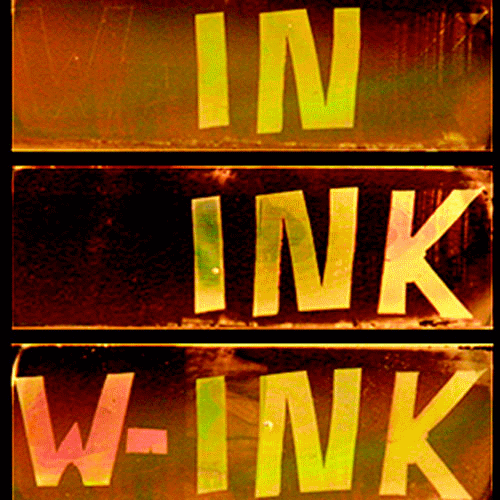July 8, 2013
Cambridge, Mass. – July 8, 2013 – A device that can instantly identify unknown liquids based on their surface tension has been selected to receive the 2013 R&D 100 Award—known as “the Oscar of Innovation”—from R&D Magazine.
Invented in 2011 by a team of materials scientists and applied physicists at the Harvard School of Engineering and Applied Sciences (SEAS) and the Wyss Institute for Biologically Inspired Engineering at Harvard, the “Watermark Ink” (W-INK) device offers a cheap, fast, and portable way to perform quality control tests and detect liquid contaminants.
W-INK fits in the palm of a hand and requires no power source. It exploits the chemical and optical properties of precisely nanostructured materials to distinguish liquids by their surface tension.
Winners of the R&D 100 Awards are selected by an independent judging panel and by the editors of R&D Magazine, which covers cutting-edge technologies and innovations for research scientists, engineers, and technical experts around the world.
Now in their 51st year, the R&D 100 Awards have long been a benchmark of excellence for industry sectors as diverse as telecommunications, high-energy physics, software, manufacturing, and biotechnology. R&D 100 Awards have identified pioneering new technologies such as the flashcube (1965), the automated teller machine (1973), the halogen lamp (1974), the fax machine (1975), the liquid crystal display (1980), the Nicoderm anti-smoking patch (1992), Taxol anticancer drug (1993), lab on a chip (1996), and HDTV (1998).
"Visual colorimetric indicators, such as pH paper or pregnancy tests, have enjoyed wide commercial success because they are inexpensive and exceptionally easy to use,” says Joanna Aizenberg, who is the Amy Smith Berylson Professor of Materials Science at Harvard SEAS and a Core Faculty member of the Wyss Institute for Biologically Inspired Engineering at Harvard University. “Our W-INK technology greatly expands upon this concept because it can detect any liquids through cleverly designed, chemically encoded opals that reveal easy-to-recognize, macroscopically distinct structural color patterns upon liquid wicking.”
Aizenberg says she envisions a broad range of industrial and consumer applications—for example, detecting toxins in a chemical spill; testing alcohol levels or the quality of gasoline, sugar or caffeine; or the creation of simple teaching sets and toys.
The project was a collaboration between Aizenberg and Marko Lončar, Tiantsai Lin Professor of Electrical Engineering at SEAS.
This is the second time in a row that Aizenberg’s team has won an R&D 100 Award. In 2012, her research group was recognized for their invention of an extremely low-friction material called SLIPS, for “slippery, liquid-infused porous surfaces.” Inspired by the pitcher plant, SLIPS resists liquid, ice, and dirt and could be incorporated into a wide range of products, from medical devices to refrigerators.
“These R&D 100 Awards are a testament to the role of bold scientific thinking and applied research in solving everyday challenges—in the case of W-INK, improving quality control and security,” says Cherry A. Murray, Dean of Harvard SEAS, John A. and Elizabeth S. Armstrong Professor of Engineering and Applied Sciences, and Professor of Physics. “The W-INK technology draws on insights from chemistry, materials science, optics, self-assembly, and nanotechnology to create a deceptively simple chip with the potential to make a really big impact.”
The W-INK concept relies on a precisely fabricated material called an inverse opal, a layered glass structure with an internal network of ordered, interconnected air pores. Akin to the litmus paper used in chemistry labs around the world to detect the pH of a liquid, the W-INK device changes color when it encounters a liquid with a particular surface tension. A single chip can react differently to a wide range of substances; it is also sensitive enough to distinguish between two very closely related liquids.

(A) In this W-INK prototype, the chip appears blank in the air. When dipped in varying concentrations of ethanol, however, it reveals new markings. (B) Because all liquids exhibit a surface tension, this indicator has the potential to be used to differentiate between liquids of any type. (Image courtesy of Ian Burgess.)
Selectively treating parts of the inverse opal with vaporized chemicals and oxygen plasma creates variations in the reactive properties of the pores and channels, allowing one liquid to pass through while excluding others. When the correct liquid enters a pore, the chip reflects light differently, producing a telltale change in color.
“It is fantastic to see Joanna and her team acknowledged yet again for their mastery of bioinspired design,” says Wyss Founding Director Donald Ingber, who is also a Professor of Bioengineering at Harvard SEAS. “The iridescent light effects of inverse opals are found throughout nature, from butterfly wings to oyster shells—and W-INK harnesses these design principles in an entirely new, innovative way with immediate relevance to society.”
Aizenberg and Lončar were joined in the initial research by Ian B. Burgess (who was a Ph.D. student at Harvard SEAS at the time and now a postdoctoral fellow at the Wyss Institute), Lidiya Mishchenko (a graduate student at SEAS), Matthias Kolle (a postdoctoral researcher at SEAS), and Benjamin D. Hatton (a research appointee at SEAS and a technology development fellow at the Wyss Institute).
Winners of the R&D 100 Awards will be recognized at a ceremony in November 2013.
In addition to her roles at Harvard SEAS and the Wyss Institute, where she leads the Adaptive Materials Technologies platform, Joanna Aizenberg is the Susan S. and Kenneth L. Wallach Professor at the Radcliffe Institute for Advanced Study; Professor of Chemistry and Chemical Biology at Harvard; and co-director of the Kavli Institute for Bionano Science and Technology at Harvard.
The "W-INK" research was supported by the Harvard School of Engineering and Applied Sciences, the Wyss Institute for Biologically Inspired Engineering at Harvard University, and grants from:
- the Air Force Office of Scientific Research;
- the Natural Sciences and Engineering Research Council of Canada; and
- the U.S. Department of Homeland Security (DHS), administered by the Oak Ridge Institute for Science and Education, through an interagency agreement between the U.S. Department of Energy and DHS.
Additionally, electron microscopy was performed at Harvard's Center for Nanoscale Systems, part of the National Nanotechnology Infrastructure Network, which is supported by the National Science Foundation.















